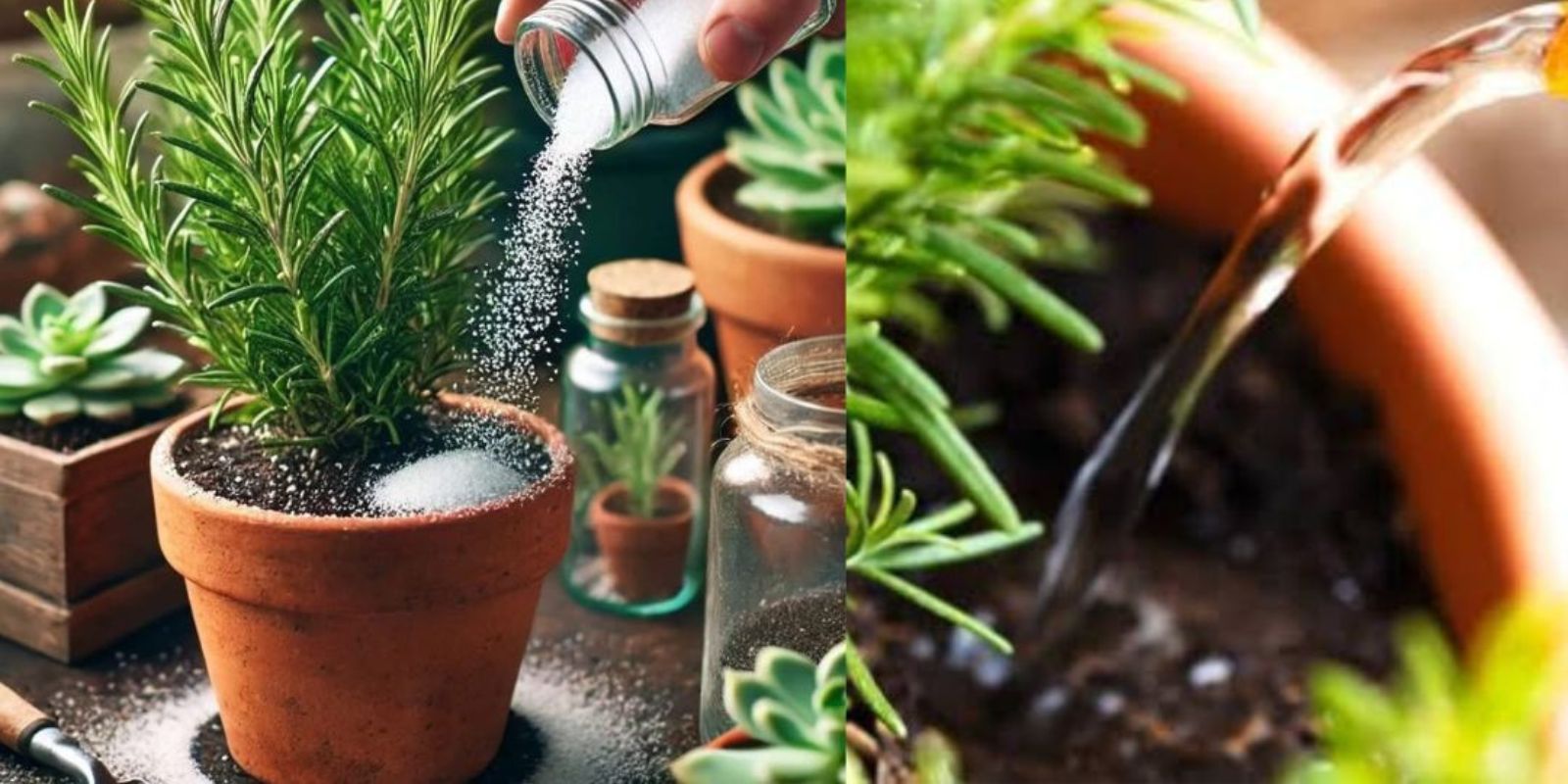Rosemary, a fragrant and versatile herb, is a staple in gardens and kitchens alike. While it’s known for being relatively hardy, many gardeners struggle to keep it healthy and hydrated. Rosemary plants often face challenges like drying out, root rot, or poor growth, especially when environmental conditions aren’t ideal. If you’ve ever wondered how to keep your rosemary thriving, this guide will walk you through the secrets of maintaining a lush, evergreen plant that will make your garden the envy of all.
Understanding Rosemary’s Needs
Native to the Mediterranean, rosemary thrives in warm, sunny climates with well-draining soil. Its resilience is one of its key characteristics, but like any plant, it has specific requirements. Recognizing these needs is the first step toward ensuring your rosemary remains healthy and vibrant.
Key Characteristics of Rosemary:
- Sunlight: Requires 6–8 hours of direct sunlight daily.
- Soil: Prefers sandy or loamy soil with excellent drainage.
- Water: Sensitive to overwatering; drought-tolerant but not immune to prolonged dryness.
- Temperature: Thrives in moderate climates but struggles in extreme cold or humidity.
The Steps to Thriving Rosemary
1. Choose the Perfect Location
The location of your rosemary plant plays a significant role in its overall health. For outdoor plants, select a sunny spot where it can soak up plenty of light. Indoors, place the plant near a south-facing window to maximize sunlight exposure.
2. Use Well-Draining Soil
Rosemary’s Mediterranean roots mean it prefers soil that mimics its native environment. A mix of sandy or loamy soil works best. Avoid heavy clay soils that retain water, as this can lead to root rot.
Pro Tip: When planting in pots, use terracotta containers with drainage holes. Terracotta allows moisture to evaporate, preventing waterlogging.
3. Master the Art of Watering
Watering is where many gardeners go wrong. Rosemary is drought-tolerant but still needs consistent care. Allow the top inch of soil to dry out before watering again. Overwatering is one of the quickest ways to kill rosemary.
Watering Guidelines:
- During warm months, water once a week or when the soil feels dry.
- In cooler months, reduce watering frequency to prevent soggy roots.
How to Prevent Drying Out
4. Mulch for Moisture
Mulching around the base of your rosemary plant helps retain soil moisture without making it too wet. Use organic materials like bark or straw to create a barrier against evaporation.
5. Prune Regularly
Pruning not only keeps your rosemary bush neat but also encourages healthy new growth. Trim away any dead, woody stems and harvest sprigs frequently to maintain its shape and vigor.
How to Prune Rosemary:
- Use sharp, clean scissors or pruning shears.
- Remove dead or discolored stems.
- Trim back overgrown sections, ensuring you leave healthy green foliage.
Special Care for Potted Rosemary
For those growing rosemary in pots, additional attention is required to prevent drying out. Containers dry out faster than garden soil, especially in hot weather.
6. Choose the Right Pot
Select a pot that’s slightly larger than the plant’s root ball, with drainage holes at the bottom. Terracotta pots are ideal because they allow better air circulation.
7. Fertilize Sparingly
Feed potted rosemary every few months with a balanced, slow-release fertilizer to support growth. Avoid over-fertilizing, as rosemary prefers lean soil.
Seasonal Care Tips
8. Winter Protection
Rosemary is frost-sensitive and needs protection in colder climates. If you live in a region with harsh winters, consider moving your rosemary indoors. Ensure it’s placed in a bright, cool room with plenty of light.
Alternative: If you leave your rosemary outdoors, cover it with frost cloth or bring it close to a wall that radiates heat.
9. Summer Maintenance
In hot weather, rosemary may require more frequent watering. Check the soil regularly and water as soon as the top layer feels dry. Avoid watering during the hottest part of the day to prevent shock.
Common Rosemary Problems and Solutions
1. Yellowing Leaves
- Cause: Overwatering or poor drainage.
- Solution: Reduce watering and ensure the pot or soil drains efficiently.
2. Brown, Dry Tips
- Cause: Underwatering or exposure to intense heat.
- Solution: Increase watering frequency and provide afternoon shade in extreme heat.
3. Root Rot
- Cause: Soggy soil from overwatering.
- Solution: Remove affected roots, repot in fresh soil, and adjust watering habits.
4. Pest Infestations
- Cause: Aphids, spider mites, or whiteflies.
- Solution: Spray with neem oil or use insecticidal soap.
Why Rosemary is Worth the Effort
Not only does rosemary add incredible flavor to dishes, but it also brings numerous benefits to your garden and home:
- Aromatic Beauty: Its fresh scent can repel pests like mosquitoes.
- Low Maintenance: Once established, rosemary requires minimal care.
- Herbal Uses: Perfect for teas, oils, and natural remedies.
Final Thoughts
Keeping rosemary lush and thriving is simpler than it seems with the right care and attention. By focusing on proper location, watering, pruning, and seasonal care, you can enjoy a vibrant rosemary plant that enhances both your garden and kitchen.
💬 What’s your go-to tip for keeping rosemary healthy? Let’s share the secrets below!
#RosemaryCare #HealthyHerbs #GardeningTips #LushGreenery #HerbGardenGoals #HomeGardeningHacks #GrowYourOwnFood

